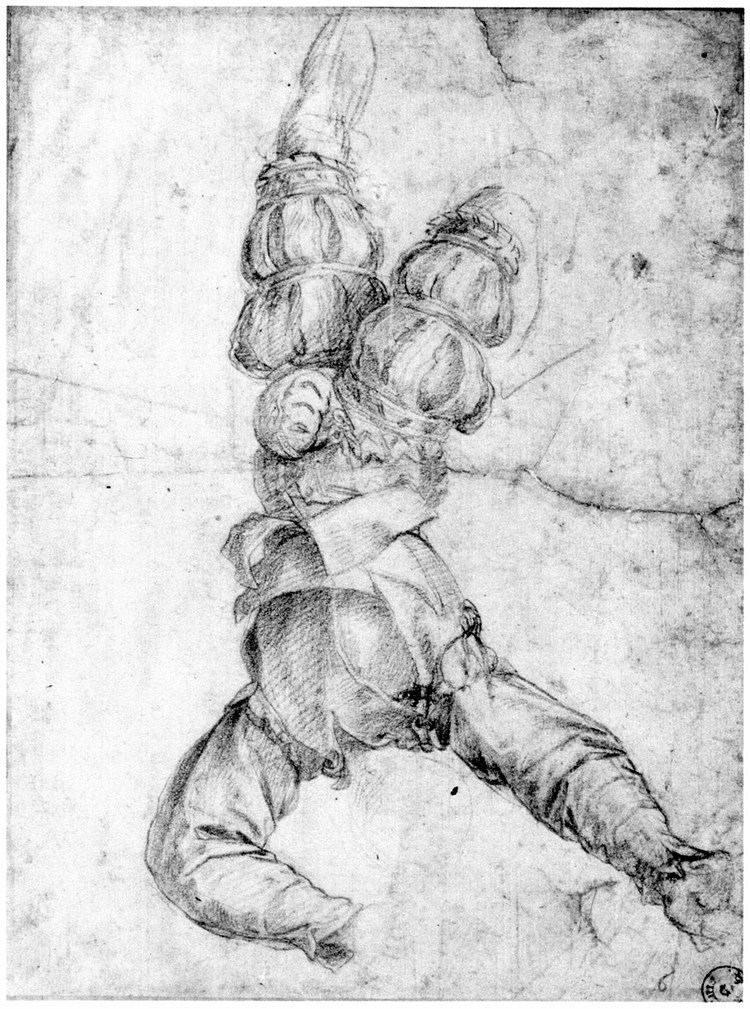 | ||
Pittura infamante ([pitˈtuːra imfaˈmante]; Italian for "defaming portrait"; plural pitture infamanti) is a genre of defamatory painting and relief, common in Renaissance Italy in city-states in the north and center of the Italian peninsula during the Trecento, Quattrocento, and Cinquecento. Popular subjects of pittura infamante include traitors, thieves, and those guilty of bankruptcy or public fraud, often in cases where no legal remedy was available. Commissioned by governments of city-states and displayed in public centers, pittura infamante were both a form of "municipal justice" (or "forensic art") and a medium for internal political struggles.
Contents
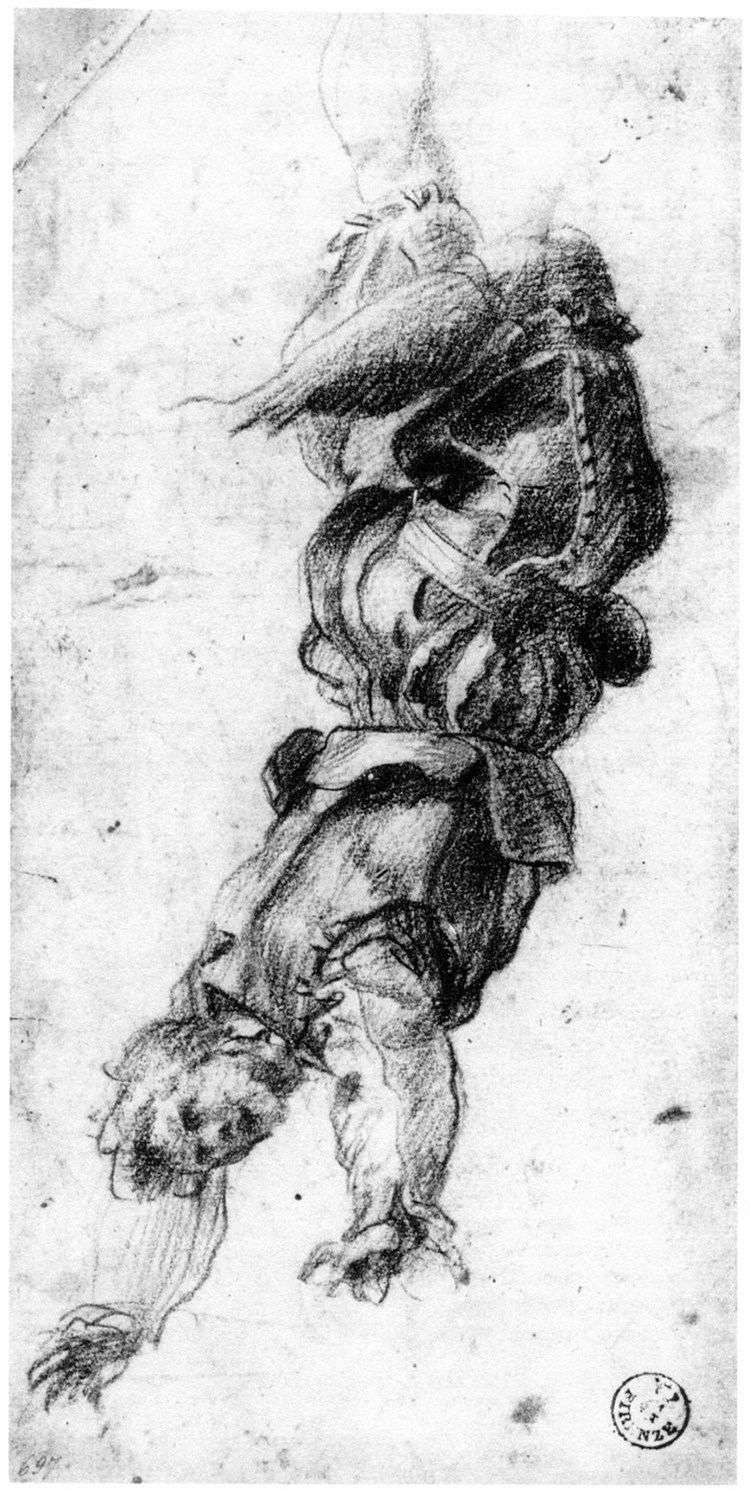
According to Samuel Edgerton, the genre began to decline precisely when it came to be regarded as a form of art rather than effigy; the power of the genre derived from a feudal-based code of honor, where shame was one of the most significant social punishments. As such, pittura infamante has its roots in the doctrines of fama and infamia in ancient Roman law.
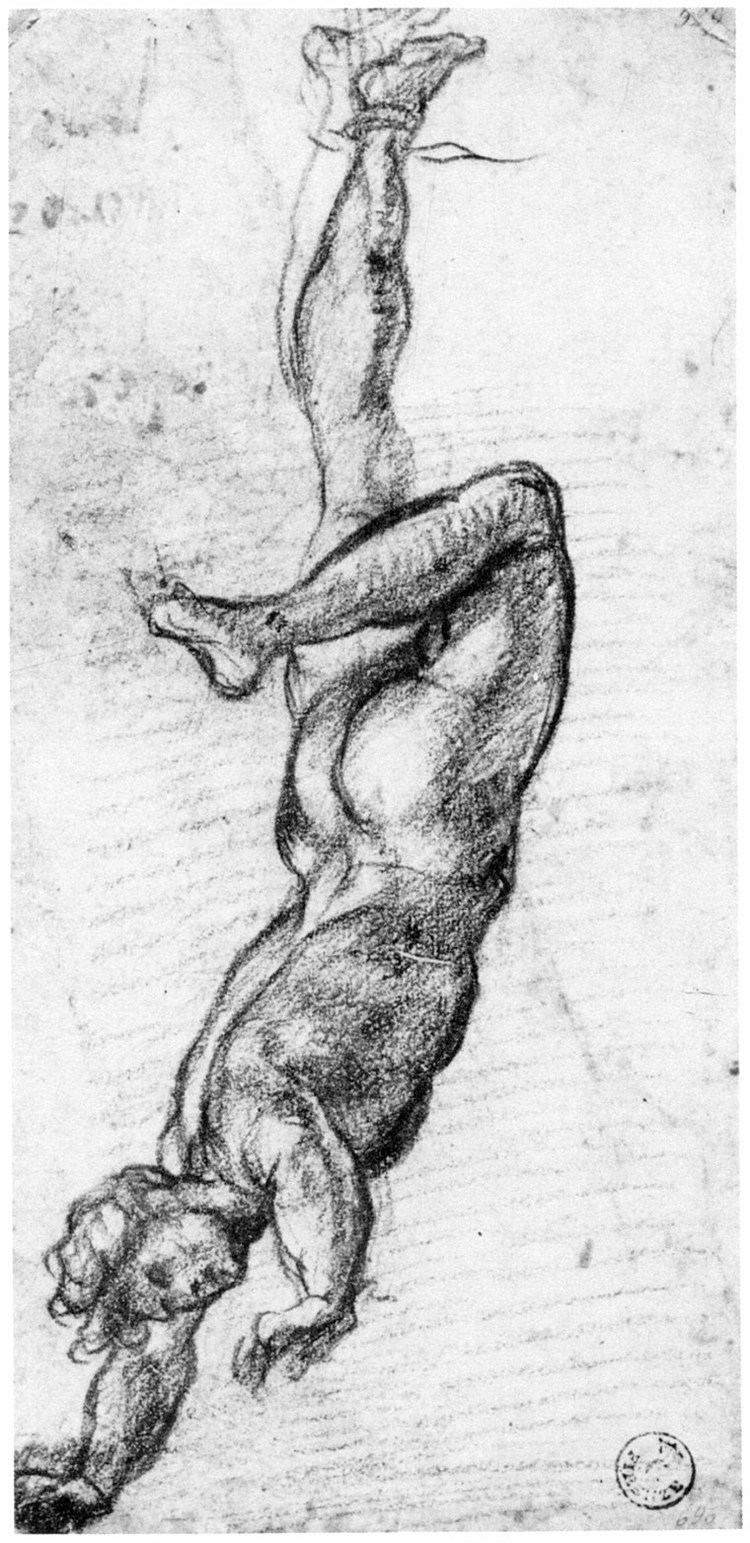
Display
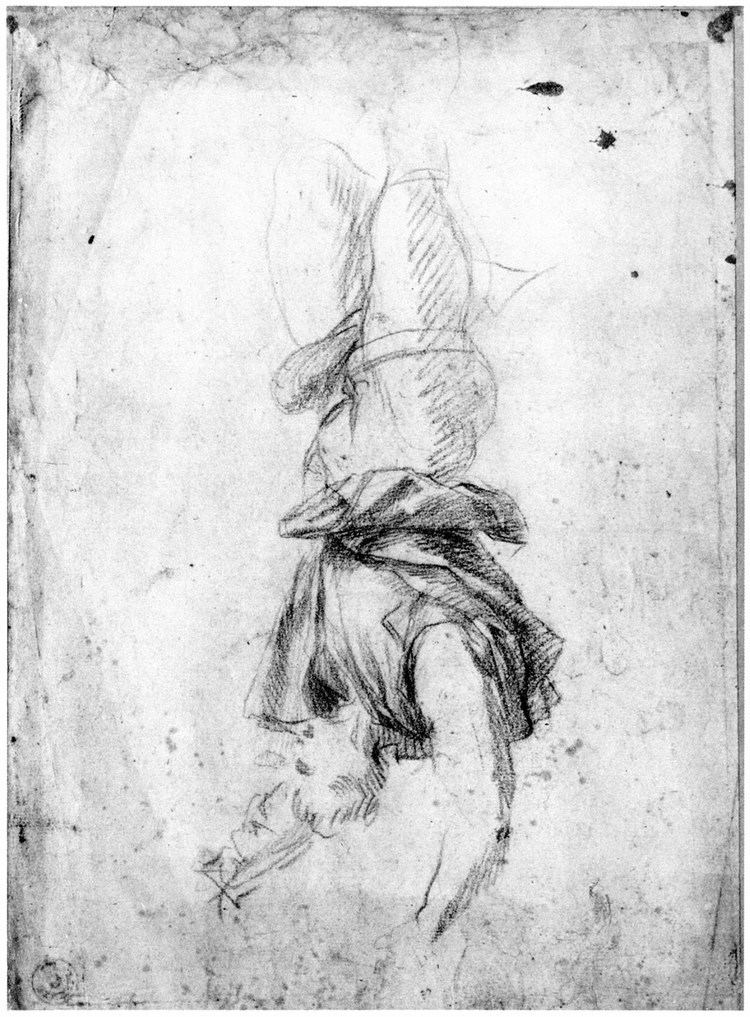
Pitture infamanti could appear in any public place, but some places were more frequently adorned with them; for example, the first floor exterior of the Bargello periodically contained numerous, life-size, pittura infamante frescoes. Florentine law required the podestà have such caricatures painted, and accompanied by verbal identification those held in contempt of court for financial offenses (bad debt, bankruptcy, fraud, forgery, etc.). Pitture infamanti were far more common in Republican Florence than in autocratic city states, whose rulers often deemed them to be sources of "disrepute."
Themes
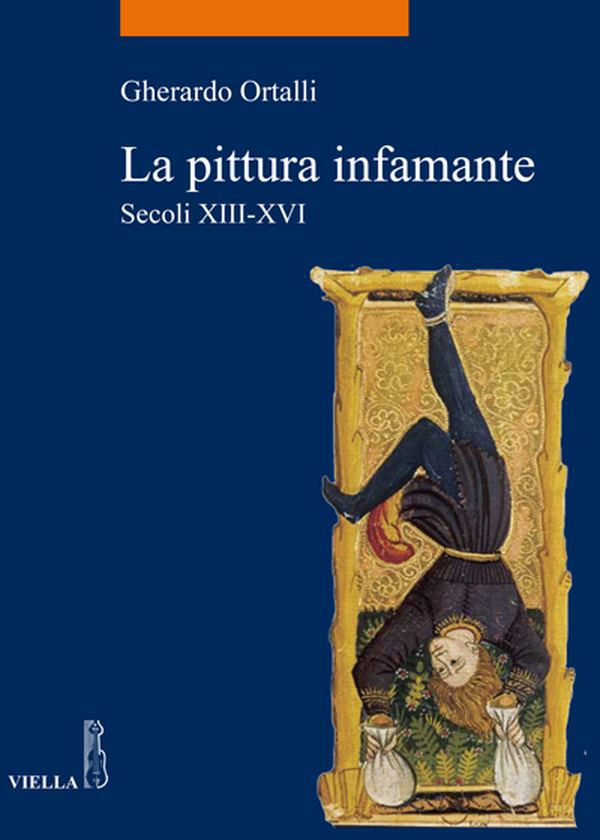
Common themes of pittura infamante—which were meant to be humiliating—include depicting the subject as wearing a mitre or hanging upside down, being in the presence of unclean animals such as pigs or donkeys or those deemed evil like snakes; pittura infamante would also contain captions listing the offenses of the subject. Pittura infamante could originate as more favorable depictions, only to be transformed after the subject had fallen out of favor.
Imagery
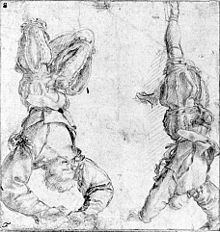
Pittura infamante always depicted men and never women, and generally depicted upper class men (who would have the most to lose from character assassination). The act of hanging itself was also significant, as affluent criminals would generally be afforded the privilege of beheading rather than hanging; hanging was also shameful in religious contexts (e.g. Judas). The topos of mundus inversus ("world upside down") is often associated with comedy and humiliation.
Famous artists who painted pitture infamanti frescoes include Andrea del Castagno, Sandro Botticelli, and Andrea del Sarto. There are no surviving examples of pitture infamanti frescoes, but contemporary sources suggest that they were brightly colored. Detailed descriptions of pitture infamanti in primary sources are rare. A very few preparatory drawings, however, are extant, and The Hanged Man from Tarot cards is thought to resemble the archetypal pittura infamante theme, as Tarot decks were first produced in northern Italy in the 1440s.
Records
Documentary evidence for pittura infamante outside Italy is rarer but existent. For example, records support the use of "very unpleasant pictures" painted on cloths during the Hundred Years War and the reign of Louis XI in France, and—later—in England and north Germany.
Pitture infamanti were the counterpoint of another contemporary form of secular, full-length portrait: uomini famosi ("famous men") or uomini illustri ("illustrious men"), which depicted figures from the Old Testament or Antiquity in a positive context, generally on the interior of private or civic buildings as moral exemplars.
